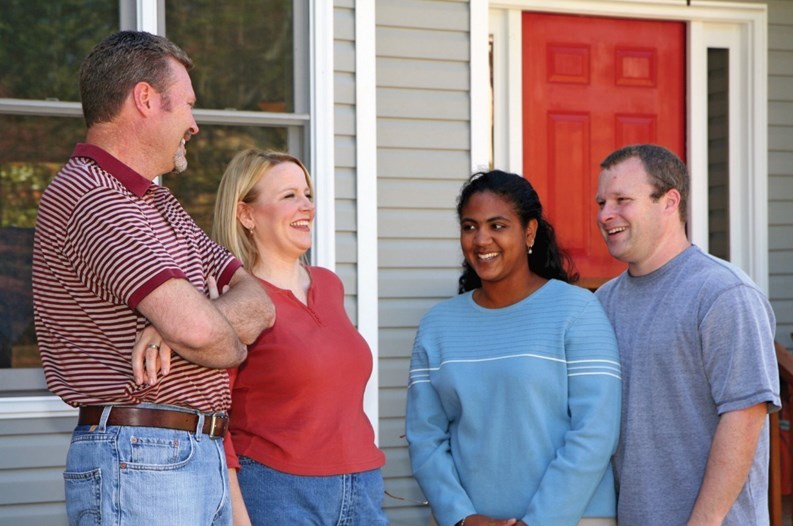Thirty-seven years ago when Mary Ann Parker moved to Heritage Village in Southbury, Connecticut, she bought her condominium from the builder. She was a new resident, but so was everyone else. It was, she describes, an entirely new situation in which people believed they were not buying just homes, but "a way of life." They were pioneers who, according to the Heritage Village website, "were entrusted with the problems of the organization and management, for which no precedent existed, and operational responsibilities, for which they had no experience." The website lauds those early Villagers who "brought vision, integrity and imagination to a complex community structure — and made it work."
It was, back then, a situation that will never exist again, Parker points out. From the first time a home was resold, the community became two: old residents and new residents. And in the many years since that shift, the Village has created a multi-faceted program to integrate and orient new residents which could serve as a model for others.
Heritage Village is an active adult community that is home to more than 4,000 people in 2,580 residences. One of its greatest strengths – the immensity of the community, its seven shared recreational facilities, and its over 100 activity groups – can be overwhelming and confusing to newcomers, Parker says.
Newcomer's Committee Formed
"The executive secretary used to give out some information to people when they moved in, but it became clear that they needed more help and extra information," says Parker. Just two years after Parker moved in, she launched a Newcomer's Committee, which took on the task of giving new residents the knowledge and tools they would need to adjust to their new community.
"We made up a kit," Parker explains, "with information about the government of the village and how it's organized. It also includes forms like a maintenance request, a variance for exterior work, and a list of all the clubs with their contact information."
Residents of the village operate a private ambulance service that is explained in the kit and all residents are asked to create a "capsule of life," also provided in the kit: an emergency form that fits into a capsule which is then stored in the freezer of each unit.
"Our security people are first responders," Parker mentions, "and it helps them to know they can find emergency information in the same place for every person."
Because Heritage Village draws people who are looking specifically for community living, their needs as new residents may be more complex than in a typical mixed-age condominium development; nonetheless, the value of creating a neighborly environment in any condominium community cannot be overstated.
"It's a property manager's worst nightmare," says veteran Don Laliberte of Norwood Property Management in Bedford, New Hampshire, "when individuals don't care about the collective, and take matters into their own hands, acting against management – say, putting out their own newsletter-- and spreading distrust." Laliberte believes that in developments where all the parties "work hand-in-hand, the communities will thrive."
Welcome Packages Needed
Edward Michalosky, president of the New Hampshire Chapter of the Community Associations Institute, concurs. He says at the very least, most associations put out a welcome package that provides people with a summary of their fees and an outline of how their association works. He says it's important to provide new residents with all pertinent contact information to communicate effectively and that it can also be helpful to give out a list of local utilities.
"If someone is moving from anotherstate," he explains, "they don't necessarily know who to call for their cable or phone service."
Michalosky recommends that the welcome information include the names of people on the board and a schedule of board meetings. "Sometimes people say they don't want their names published," he says, "but they are public anyway."
Lastly, he says, it may seem like common sense, but people need a copy of all the current rules and regulations, and the bylaws and declarations. They need to know right off what's expected, Michalosky believes.
Michalosky says he's been part of eight associations and has served on four boards in his time, and he's surprised by what people don't know about living in a condominium when they move in. Many condo owners, he points out, are first-time homeowners, and they don't realize they can't do whatever they want.
"One time," he remembers, still disbelieving, "a new resident didn't even know he had to pay condo fees."
Many condominium associations already provide welcome material similar to what Michalosky describes above, but what he'd really like to see is more welcome letters that go beyond the basics.
"In just a sentence or two, I think it's a good idea to say something about community living, about the concept that sharing expenses and responsibilityis for the betterment of everyone."
Michalosky insists he is not talking about writing a book, but saying something short that conveys the spirit of living in a condominium community with neighbors who work together for the common good.
If management could help educate people up front about the value of trying to cooperate and live harmoniously, Michalosky says, it would pay off in the long run.
"It a takes a lot more work to rebuild a community after there's been a conflict," Laliberte adds.
When is a new resident no longer a new resident?
At Heritage Village, after newcomers are welcomed with the information kit, they are also offered an orientation that Parker and one of her colleagues on the committee run each month.
"No one is required to attend," Parker explains, "They are invited. We never know, from month to month, how many people will show up. Most people come within a few months. One time, someone came the day after she moved in. That was a record."
A Common Language
Parker says that one of the first things she talks to people about are the terms used to describe the village. "Some words are not used here like they are used in other living situations," Parker claims.
For example, a unit is an individual's home, a cluster is group of homes, and a condominium is one of 24 separatelyincorporated buildings in the development. Each condominium has its own nine-member board of directors, and one person from each board acts as a trustee on the Master Association which governs all residential matters. If that weren't confusing enough, the Heritage Village Foundation is a non-profit organization that operates all the non-residential buildings and facilities. There is also a Heritage Village Civic Association that is altogether outside the other two.
Imagine, if you will, moving into a neighborhood and not realizing that when you say street, and when others say street, you don't mean the same thing at all! Clearly, the orientation serves a need.
After experienced residents created the committee, developed the kit, and launched the orientation to help new residents get their feet, newcomers themselves added one more step to the process: the New Villager's Club, a social group that new residents can participate in for up to three years, "after which you aren't really new anymore," Parker says.
The New Villager's Club helps people break into the social scene. Within the club, members can help and encourage each other to try new things rather than feeling like they need to break into "someone's established group," as Parker puts it.
Parker says there used to be a time at Heritage Village when "you didn't walk by someone without saying hello," but it's not like that anymore. Nonetheless, a certain degree of cooperation is required between people who want to live together peacefully, she contends.
Parker says that without exception, new residents who attend the orientation thank her for the effort and say they appreciate the guidance the Newcomer's Committee provides. Parker's strongest piece of advice is to read every word of the association's weekly news bulletin to know what's happening – and then to get out in the community.
"Nobody comes to your door," she says, "But you are welcome at everything."
Lisa Oram is an editor and writer living in Amherst, MA.







Comments
Leave a Comment